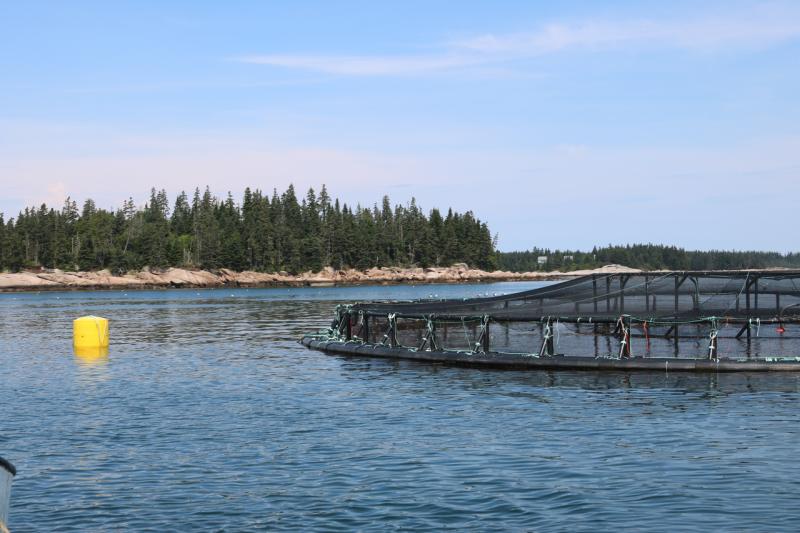Food-related industries are the backbones of the U.S. and Canadian economies. These industries increase food security and export opportunities and provide important rural jobs. Aquaculture is an expanding food-related industry in both nations and is the world’s fastest growing food production system. As aquaculture expands, Canada and the United States are working together to secure a sustainable future for seafood farming through science and policy collaboration.
In 2014, the Canada-United States Regulatory Cooperation Council (RCC), a high-level initiative established to increase regulatory coordination and transparency between the two countries, issued its Joint Forward Plan. This Plan added aquaculture as a focus area for collaboration. Fisheries and Oceans Canada and the National Oceanic and Atmospheric Administration within the U.S. Department of Commerce were identified as the two leads for aquaculture collaboration to support continued sustainable aquaculture development in both countries.
“By building on existing relationships and sharing expertise, the two agencies are working to increase food security through aquaculture while also protecting North America’s aquatic resources,” said Michael Rubino, Director of NOAA’s Office of Aquaculture. The two agencies identified environmental management of marine net pen aquaculture as the initial focus for collaboration. This effort resulted in a report that reviewed the regulatory requirements established by federal and provincial/state authorities in both Canada and the United States and a comparative analysis that identified similarities and differences between the regulatory requirements and management approaches in each country. Provincial and state agency staff also contributed information to the report.
The report focus was on geographic areas in which significant commercial-scale net pen aquaculture farms currently operate – namely, the Canadian provinces of British Columbia, New Brunswick, Newfoundland/Labrador, and Nova Scotia and the U.S. coastal states of Maine and Washington. The joint report, titled Regulatory Regimes for Environmental Management of Marine Net Pen Aquaculture in Canada and the United States, highlights that both countries have implemented comprehensive legislative and regulatory measures for net pen aquaculture in five key theme areas. These areas include siting and management of aquaculture operations, habitat and water quality, fish health and therapeutants, genetics and fish escapes, and other living marine resource interaction.
The report found that both Canada and the United States have robust regulatory mechanisms in place to manage net pen aquaculture. There are some differences in regulatory approaches, but in both countries the objective of the regulatory regime is the production of healthy and sustainable farmed fish while enforcing measures to protect the aquatic environment. The report also highlights the complex regulatory system for net pen aquaculture in Canada and the United States with both regimes relying on numerous federal, provincial/state, local, and tribal government requirements.
“The comparability analysis included in this first of its kind report will provide a strong basis for further regulatory and scientific cooperation and collaboration to advance the sustainable marine net pen aquaculture industry in both nations,” added Rubino.
DFO and NOAA will continue to exchange information and to cooperate on marine aquaculture science and policy to address emerging trends in North American and global aquaculture and to create tangible benefits for American and Canadian consumers and business.



